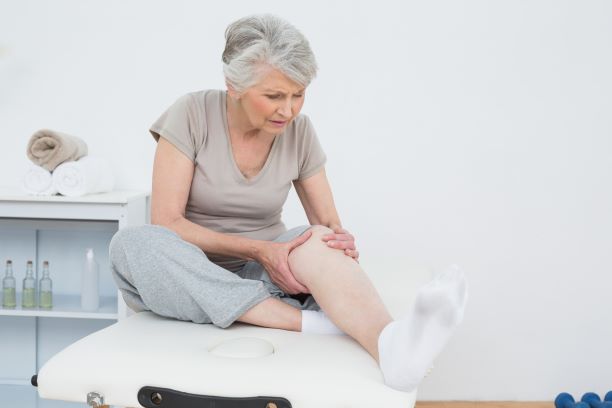Knee replacement surgeries are helping hundreds of thousands of people each year. Most studies show 1-year patient satisfaction rates at 80% to 90%. However, some people do develop complications. Approximately 5% of people undergoing knee replacement surgery develop a stiff and painful knee. Knee stiffness after surgery is associated with worse results.
People with increased stiffness after their knee replacement have more pain, worse functional outcomes, and lower satisfaction rates. Thankfully, there are steps you can take to prevent knee stiffness from negatively impacting your recovery.
Who is Susceptible to Developing Stiffness after Knee Replacement Surgery?
Research suggests there are several factors linked to knee stiffness after surgery. These include the presence of back pain, lung disease, or diabetes. Some studies suggest males are more susceptible to developing stiffness. Other studies show females are more susceptible.
Multiple studies show people who are overweight are at a greater risk. Surprisingly, younger people undergoing knee replacement are at risk. Not surprisingly, having a stiff knee before surgery places you at greater risk for stiffness after your surgery. If any of these factors sound like you, you need to read on.
The Importance of Exercise Before Your Knee Replacement
Your knee range of motion before your surgery is closely associated with how much you will achieve after surgery. If you cannot straighten your knee fully before surgery, it is unlikely you will ever fully straighten it after surgery. This becomes a big problem!
At least 3 months before your surgery you should start performing range of motion exercises. This will improve your chances of a smooth recovery and rehabilitation after surgery. Losing weight before surgery will also help. So don’t forget about aerobic exercise and your diet.
Exercises to Improve Knee Extension
Knee stiffness is defined as a range of motion loss of 5 degrees or more of straightening (knee extension) 12 weeks after surgery. We believe full knee extension is necessary to achieve the best possible outcome after surgery. When this is not achieved early (within 6 weeks of surgery) you will develop problems with your gait pattern. This leads to persistent hip and back pain. Also, if you lack knee extension you will be very uncomfortable sleeping at night.
Exercises to restore your knee extension should begin immediately after surgery. This means as soon as you are alert and oriented during your recovery. Begin by performing isometric quadriceps exercises with your knee fully straight. Begin the heel prop exercise a few days later. Start with one minute twice per day. Work up to 5 minutes several times per day until your physical therapist advises you to stop.
There is one last important point to keep in mind. Please do not develop the bad habit of resting with a pillow under your knee. This makes it almost impossible for you to regain your range of motion.
Exercises to Improve Knee Flexion
Knee stiffness is defined as a range of motion of less than 90 degrees of bending, or flexion, 12 weeks after surgery. People with less than 90 degrees 6 weeks after surgery require an additional procedure to restore their range of motion. In these cases, your surgeon will manipulate your knee while you are under anesthesia. Loss of knee flexion will result in difficulties sitting, climbing stairs, and sleeping.
Start the heel slide exercise immediately after surgery. Research shows performing active knee exercises (on your own) is better than depending on a continuous passive motion (CPM) machine. These CPM machines often do not fit properly and lead to unnecessary pain and aggravation. You are better off lying in your bed and repeatedly sliding your heel up towards your hip on your own. After a week or so you can begin using a belt or a strap to assist.
Riding a stationary bike for 5 to 10 minutes daily begins around 2 weeks after surgery. Don’t worry if you cannot perform complete revolutions. Try rocking back and forth to start. In a few more weeks, start stretching your knee from the prone lying position.
Final Thoughts on Preventing Stiffness After Your Knee Replacement
Recovering from your knee replacement surgery is no easy task. Set yourself up for success. Start early. Ideally, begin exercising several months in advance of your surgery. Be consistent with your exercises each day and don’t push too hard. Creating unnecessary pain is unhelpful and can set you back in your recovery.
Most importantly, work closely with your physical therapist. Your physical therapist will be your guide. It is rarely, if ever, necessary for your physical therapist to be forceful with bending or straightening your knee. If you have questions or would like some help, give us a call.


